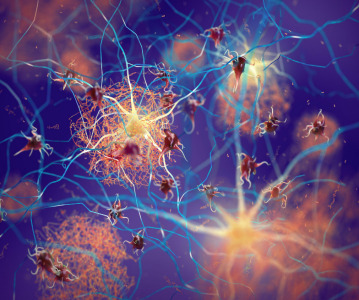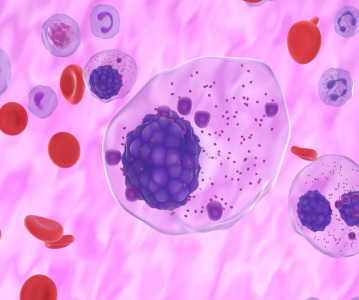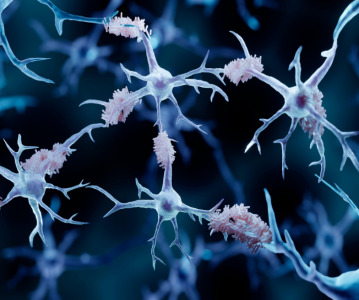Novozymes Biopharma’s Hyasis Increases Drug Release of Tramadol Hydrochloride from 1.9 to 7.5 Hours

Novozymes Biopharma, part of Novozymes A/S has releases new findings concerning the effect of Bacillus-derived Hyaluronic Acid (HA) on the drug release of tramadol hydrochloride. The new research was presented as a scientific poster at the 2013 Controlled Release Society (CRS) annual meeting, 21–24 July, Hawaii, USA.
The investigation concluded that by adding Hyasis, the Bacillus-derived HA used in the study formulated by Novozymes Biopharma, into a tablet containing tramadol hydrochloride for oral administration, the release of tramadol hydrochloride can be prolonged from 1.9 to 7.5 hours. A good correlation has been identified between the added amounts of HA and the drug release time, and this correlation gives excellent possibilities for developing specific drug release profiles for different oral drug applications.
“These results represent another step forward in meeting the emerging challenges in drug development, and we are delighted to be presenting our latest findings at the CRS annual meeting,” says Hans Ole Klingenberg, Global Marketing Director, Novozymes Biopharma. “We are committed to developing compliant formulation solutions that ensure improved stability, solubility and half-life of therapeutics and we are delighted to demonstrate how these innovative products can streamline the drug development process.”
Experimentally, the drug release was assessed by dissolution analysis using a closed loop system configuration (SOTAX CE7smart) and USP 4 dissolution method with 22.4 mm dissolution cells. The tramadol was detected on-line with UV absorbance at 270 nm.
Novozymes Biopharma’s Hyasis is an ultra-pure material with exceptionally low amounts of nucleic acids, proteins, bacterial endotoxins and microbial contamination. With a reproducible molecular weight and narrow size distribution, it is well-tolerated, safe and biocompatible, allowing the sustained and controlled release of drugs in a HA concentration dependent manner.
Related News
-
News BioNTech to begin mRNA vaccine manufacturing in Rwanda by 2025
German biotechnology company BioNTech has stated their intentions to begin production at their mRNA vaccine factory in Rwanda by 2025, which will mark the first foreign mRNA vaccine manufacturing site on the continent of Africa. -
News Identifying Alzheimer’s Disease biomarker proteins with whole blood tests
A University of Manchester spin-out pharmaceutical company, PharmaKure, has reported successful study results for the quantification of Alzheimer’s Disease biomarker proteins with a whole blood test. -
News Bill & Melinda Gates Foundation to boost mRNA vaccine initiatives in Africa with USD $40m
To address vaccine inequality and accessibility issues, the Bill & Melinda Gates Foundation aims to deliver USD $40m to various biotech companies and vaccine manufacturers in support of mRNA vaccine development. -
News CPHI Podcast Series: Exploring neurological frontiers in Alzheimer's and beyond
The next episode of the CPHI Podcast Series delves into the science and background behind some recent developments in the field of Alzheimer's disease and neurological disorders. -
News Is patient centricity the future of pharmaceutical manufacturing?
In this interview with Sandra Sánchez y Oldenhage, President of PharmAdvice, she speaks to the importance of considering patients in the manufacturing stages of the pharmaceutical supply chain, and how it can redefine healthcare. -
News CPHI Podcast Series: How to leverage AI for Drug Discovery
Artificial intelligence is the topic of debate in the latest episode from the CPHI Podcast Series, where Digital Editor Lucy Chard speaks with Bill Whitford of DPS Group about the integration of AI in healthcare. -
News Pfizer forges ahead with blood cancer therapy after approval from FDA
Pfizer gains accelerated approval from the US FDA for their new bispecific antibody therapy for multiple myeloma, set to address an unmet need for patients. -
News Alzheimer's drug donanemab deemed effective in landmark clinical trial
Results from the TRAILBLAZER-ALZ 2 Randomised Clinical Trial into the use of donanemab to treat early symptoms of Alzheimer’s disease have been analysed.
Position your company at the heart of the global Pharma industry with a CPHI Online membership
-
Your products and solutions visible to thousands of visitors within the largest Pharma marketplace
-
Generate high-quality, engaged leads for your business, all year round
-
Promote your business as the industry’s thought-leader by hosting your reports, brochures and videos within your profile
-
Your company’s profile boosted at all participating CPHI events
-
An easy-to-use platform with a detailed dashboard showing your leads and performance







